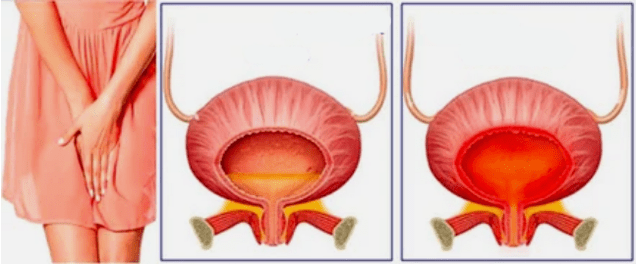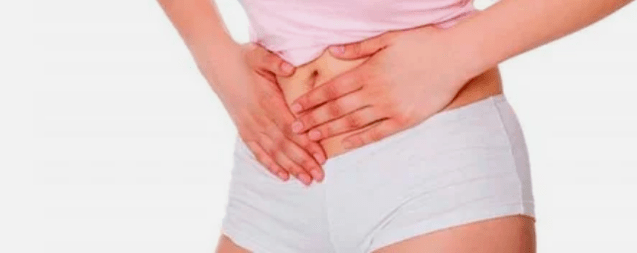Chronic cystitis is a "special" disease that every woman of the tenth woman suffers.Often finding a new exacerbation after 1-2 weeks.After the course of antibiotics.
What is the problem and how to overcome the disease?To get a clear answer to these questions, one must understand what chronic cystitis is caused and what happens in the bladder.
Chronic cystitis - The truth is in the cause of inflammation

Chronic cystitis is a collective concept, which is just a consequence of various diseases.At the same time, the inflammatory process develops for more than 2 months and affects not only the bladder mucosa membrane (as in acute inflammation) but also in deep layers.
It is useless to treat the disease exclusively with antibiotics such as acute inflammation.To relieve pain - just to deceive yourself, agreeing with temporary relief.Meanwhile, the disease will continue to progress, and sooner or later the pain will visibly "refuse" life.We offer a rational approach to understanding the disease.
In a chronic inflammatory process, pathogenic microflora is developing rapidly in the bladder.It may be not only bacteria, but also mushrooms, protozoa and viruses.Therefore, taking antibiotics is not always justified.
Important!Treatment of chronic cystitis with antibiotic group medicines is only advisable if urine is detected in the analysis of sensitive microorganisms.
A patient with chronic cystitis always has a pathology that supports inflammation:
- Bladder neck leukoplasia (not true!) Or vaginal metaplasia - chronic cervical cystitis causes benign mucosa degeneration, which is the result of several acute cystitis or sexual infection attacks, including hidden (uracostase, chlamydia, etc.);
- Bladder fun, polyps, uroolithiasis - a great place for the spread of bacteria and fungi;
- Renal inflammation, hydronephrosis, kidney disease - kidney infection with urine constantly enters the bladder;
- The deep arrangement of the urethral opening revealed during sexual intercourse - causes post -coin cystitis;
- Reduce local immunological protection - occurs during hormonal malfunction (insufficient estrogens are observed during pregnancy, menopause, ovarian pathology), genital diseases, diabetes mellitus;
- Chronic infection (caries, chronic tonsillitis, sinusitis, etc.) - the pathogen spreads with blood.
Important! These diseases are the true cause of chronic cystitis.Therefore, the disease should be considered together with a causal pathology.For example, the correct diagnosis sounds like this: "Bubble polyposis. Chronic bacterial cystitis".
The exacerbation of chronic cystitis can be caused:
- small amount of drunk water;
- Ingestion of spicy foods, alcohol;
- hypothermia, acute respiratory infections;
- "Greenhouse" effect - wearing dense synthetic linen, narrow jeans;
- no -elementary conformity with personal hygiene.
Symptoms of chronic cystitis in a woman
Chronic cystitis provides less pronounced symptoms than acute inflammation.Due to the severity of clinical symptoms and relapse frequency, the following options are distinguished for the course of chronic cystitis:
- Statively latent - the absence of complaints and laboratory changes in the urine, the diagnosis is confirmed only with an endoscopic examination;
- Latent with rare relapses - an acute image of cystitis occurs no more than 1 time a year;
- Latent with frequent relapses - exacerbations 2 or more times in one year;
- Slowly current inflammation, which is confirmed laboratory and endoscopically;
- Interstitial symptoms - pronounced, persistent pain syndrome.
Important!Chronic chronic pelvic pain cystitis should be distinguished.In the last pathology, in most cases, there are no changes in urine analysis, there is no endoscopic confirmation of inflammation.
Changes on bladder walls range from Qatarhal, ulcer and necrotic.
Symptomatic image of chronic cystitis:
- Pain is an almost constant pain in the lower abdomen (above the pubis), growing by filling the bladder and with a painful journal.Pain during urination - before, after, but more often at the end of bladder emptying.
- Frequent union - In the revisions of chronic cystitis treatment, women observe that frequent desires do not allow you to do without a long time, end with the release of a small amount of urine and an incomplete emptying feeling.Often there is nicturia (bathroom campaigns at night) and stressful urinary incontinence.
- Changes in urine - with ulcerative lesion and beginning of the necrotic process, blood appears in the urine.
Important!Unlike urethritis, chronic cystitis pain is not always associated with the act of urination.
If the symptoms of chronic cystitis in women after treatment aggravated (after 1-2 weeks), inflammation is triggered by activating a type of microorganism.The relapse, which emerged a few weeks after therapy, indicates repeated infection with another type of pathogen.Along with the signs of chronic cystitis, women also observe the symptoms of the underlying disease - the high of the vagina with gynecological pathology, lumbar pain or colic pathology during renal pathology.
Important!Urine analysis in chronic cystitis does not always reveal signs of inflammation and detects the pathogen.The only guaranteed study to confirm the diagnosis is cystoscopy.Sometimes urography is necessary.
How to treat chronic cystitis correctly?

Most women who suffer from chronic cystitis have experienced all homeopathic antibiotics and remedies know what the therapeutic injection of bladder and ionophoresis is.And why then does it seem prescribed correctly, the complex treatment doesn't help?The answer is simple - the cause of inflammation is not eliminated.Effective treatment for chronic cystitis is performed in the following areas:
- Elimination of causal pathology
Depending on the diagnosis, the urethra (plastic) is performed with an abnormal arrangement of the urethra, leukoplasia laser ablation and polyps, etc.Almost all operations are performed through the urethra, they leave no scars on the skin.The patient performs spinal or intravenous anesthesia.
Trans urethral transactions (eg stone removal) are often performed during cystoscopy.Women's revisions on the treatment of chronic cystitis usually indicate endoscopic exam pain.Cystoscopy should be performed with anesthesia so that the patient does not feel pain.After transuretral operations, a woman is in a hospital for only 1 day, on the second day she can go to work.
- The fight against infection
Depending on the type of pathogen detected, patients receive a course of antibiotics, antiviral or antifungal agents.With bacterial cystitis, medicines are prescribed with a bactericidal action (not bacteriostatic!) With a course of 7 to 10 days.
- Treatment of chronic cystitis symptoms in women
Most of the time, NSAIDs are used for the rapid level of pain syndrome.After 2-3 weeks.Ainds Course, the effect persists up to 3 months. At the same time, anti -histamines are prescribed.
- Immun stimulation
Simultaneous to antibiotic therapy, the use of immunostimulants can replace preventive courses in the next 6 months.
- Elimination of tissue hypoxia
To improve bubble mucosa nutrition and prevent the formation of adhesions, anti -actors are prescribed.
Preparations that restore microcirculation and have an immunostimulator effect are also widely used for prostatitis in men and are prescribed for chronic cystitis in women.
- Prevention of the Substitute of the Epithelium
Recently, hormonal drugs have been actively used for this purpose.Estrogen and progesterone accelerate the development of the protective layer in the bubble mucosa.The widely used drug is produced in tablets and candles.
- Local therapy
For local exposure to the inflammatory process, they resort to facilities (injections) in the dioxidine bladder, heparin, colloidal silver solution (combat bacteria, viruses, simpler and fungi).However, this treatment is only to resort to extreme cases to exclude the infection.
- Physiotherapy
Physiotherapy - Electrophoresis of medicines, ultrasound, laser treatment, electrical stimulation, magnetotherapy - prevent additional replacement of the bladder epithelium and have a resorption effect.Drug treatment is actively supplemented with physical therapy exercises to normalize blood circulation and strengthen the pelvic muscles.
- Popular Remedies Treatment
It is possible to treat chronic home cystitis with baths and medicinal herbs decoctions only with the approval of the assistant doctor!Most of them have a diuretic and anti -saptic effect.In addition, the stomach activates tissue regeneration, bardan fights with a fungal, chamomile and ivy infection eliminate muscle spasm (leveraging pain), equinacea has an antiviral effect.Treatment with medicinal herbs lasts at least one month, the best effect is achieved with a combination of several herbs.
Important!In chronic cystitis, it is necessary to consume sufficient water, exclude clear and salty dishes, meat and smoked foods containing preservatives and chemical dyes of the diet.
What is the forecast?
The duration of treatment and the prognosis of the disease depends on the degree of damage to the bladder epithelium, the nature of concomitant pathology and the state of immunity.To avoid relapse, doctors advise to join the following recommendations:
- 10 days.Drink plant -based decoction;
- The next 10 days are antibiotics;
- another 10 days.A decoction of another medicinal grass.
A similar scheme used for 3-6 months.After the main course of treatment, it practically eliminates the exacerbation of chronic cystitis.
The most unfavorable forecast for the formation of scars in the bladder and urethra.In such cases, surgical excision of connective tissue outbreaks.
It should also be remembered that a chaotic drug without a prescription can eliminate acute symptoms, but will not restore the bladder mucosa membrane and will not relieve causal disease.Only a doctor, having a clear idea of the cause of the disease, will individually prescribe an effective treatment scheme and help to get rid of the exhaustive symptoms of chronic cystitis!
























